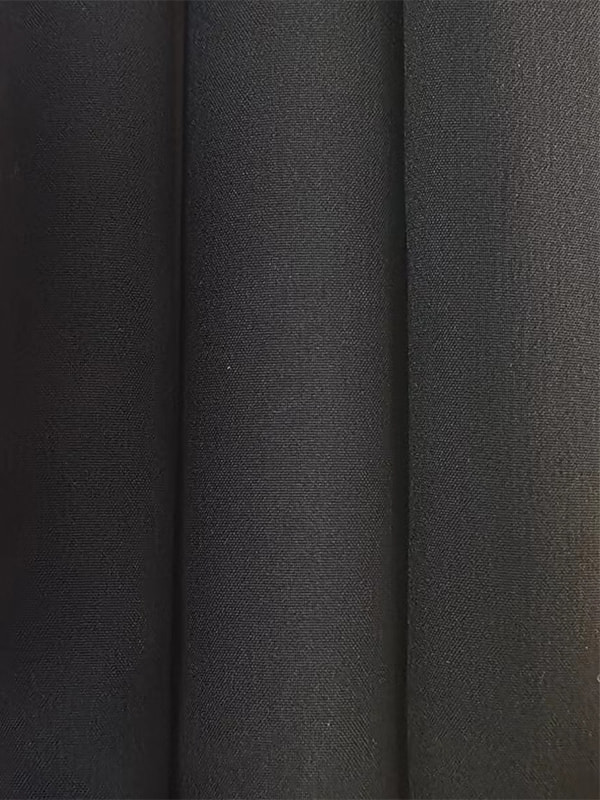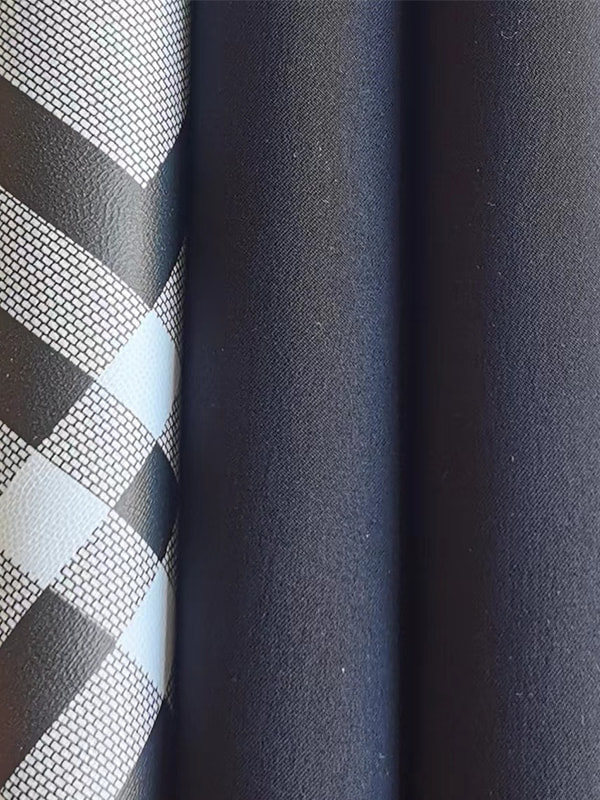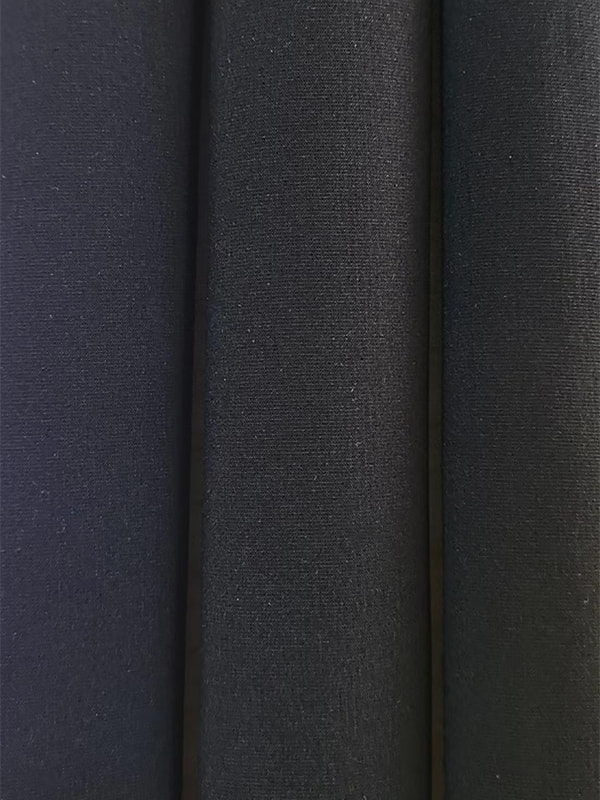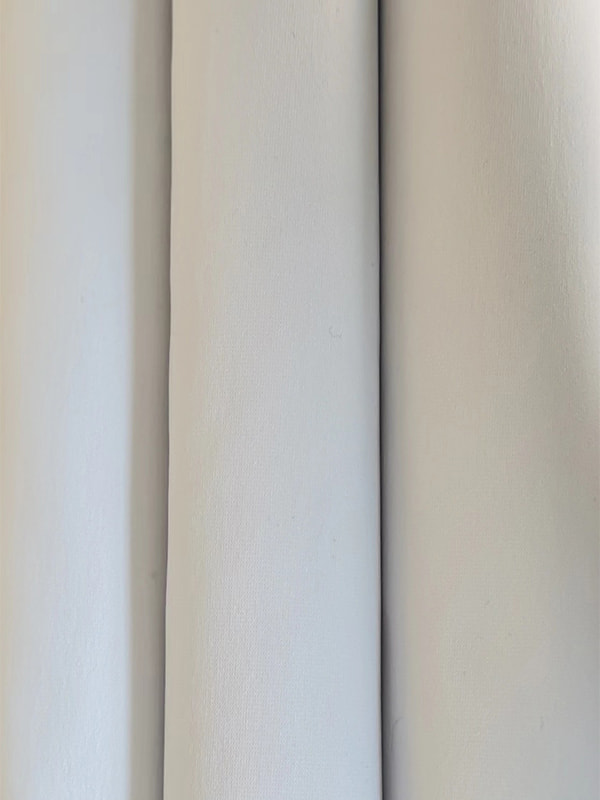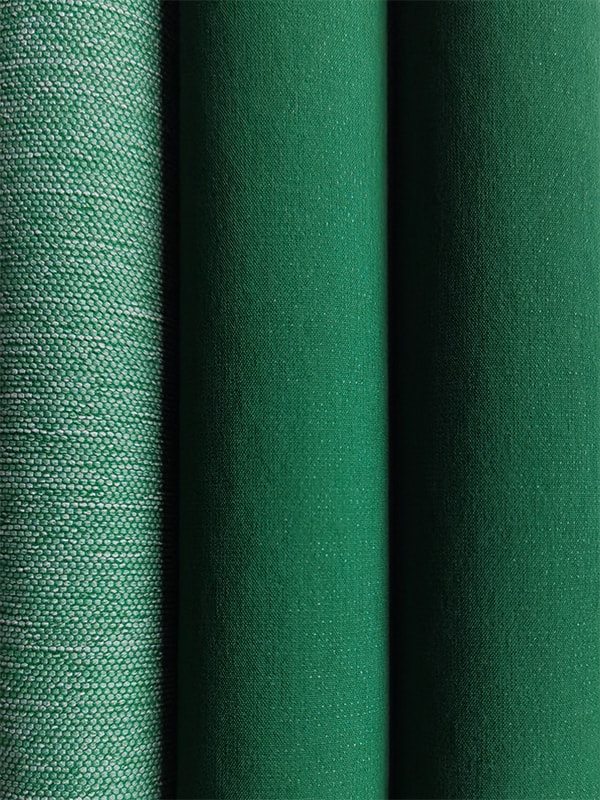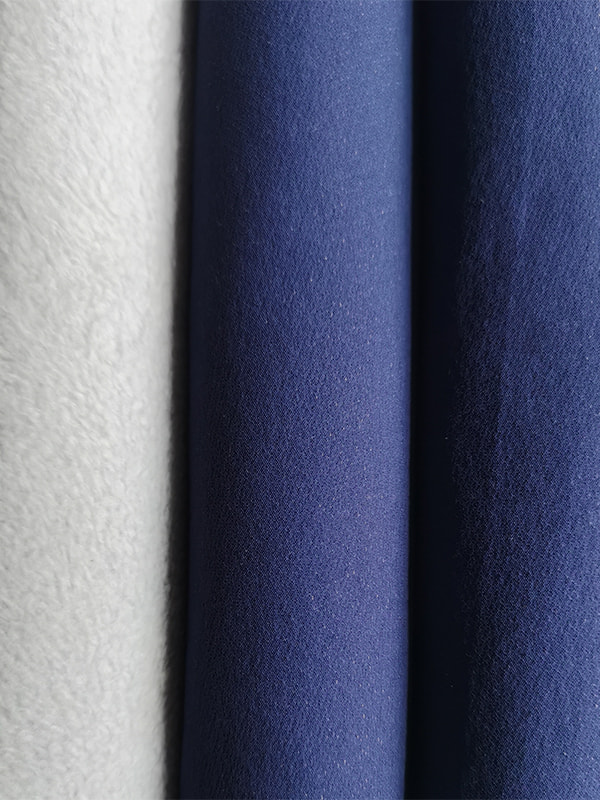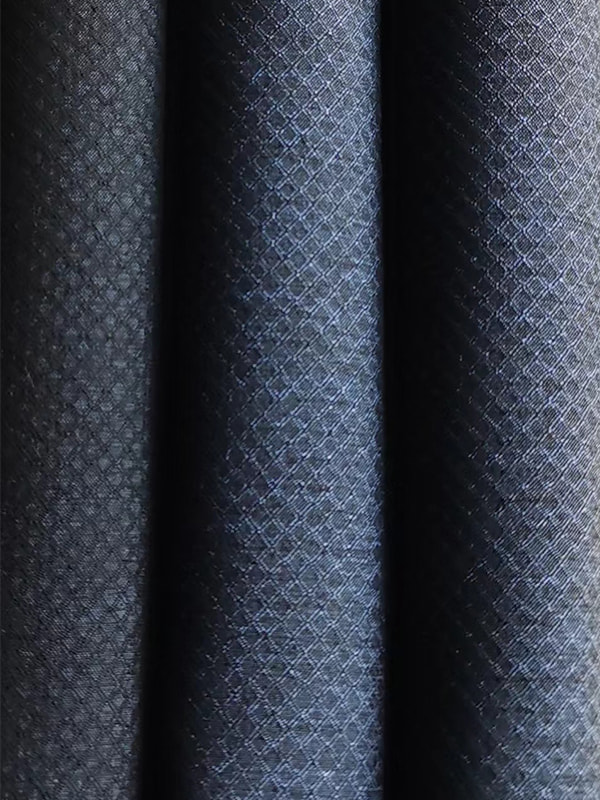Premium Twill Stretch Woven Fabric for Stylish and Durable Apparel
2025-10-14
Understanding Twill Stretch Woven Fabric
In the world of textiles, few materials combine sophistication, comfort, and resilience as effectively as twill stretch woven fabric. This innovative fabric represents a significant advancement over traditional woven materials by integrating exceptional flexibility into the classic twill structure. Characterized by its distinctive diagonal parallel ribs, twill weave has been a staple in quality apparel for centuries. The addition of stretch fibers, typically elastane or spandex, transforms this timeless weave into a modern marvel that meets the demands of contemporary fashion and active lifestyles.
The manufacturing process of twill stretch woven fabric involves interlacing yarns in a specific pattern that creates the signature diagonal lines, while strategically incorporating elastic fibers throughout the weave. This combination results in a fabric that maintains the durability and professional appearance of traditional twill while offering unprecedented freedom of movement. The versatility of this fabric makes it suitable for everything from tailored business attire to casual weekend wear, bridging the gap between formal elegance and everyday comfort.
Key Characteristics of Premium Twill Stretch
Premium twill stretch woven fabric possesses several distinguishing qualities that set it apart from other materials:
- Diagonal Weave Pattern: The fundamental twill structure creates a subtle, sophisticated texture that resists wrinkling and maintains its shape exceptionally well.
- Two-Way or Four-Way Stretch: Depending on the specific construction, the fabric can offer stretch in either two directions or all four directions, providing varying levels of mobility.
- Durability: The tight weave pattern creates a strong, long-lasting fabric that withstands frequent wear and washing without compromising its integrity.
- Drape Quality: Premium twill stretch woven fabric has an excellent drape that flatters the body without clinging uncomfortably.
- Recovery Memory: High-quality stretch twill returns to its original shape after stretching, preventing bagging or sagging over time.
Top 5 Long-Tail Keywords for Twill Stretch Woven Fabric
For those seeking specific information about twill stretch woven fabrics, certain search queries can provide more targeted results. These long-tail keywords represent specialized interests within this fabric category and offer valuable insights for both industry professionals and consumers. Understanding these specific search terms can help navigate the extensive information available about this versatile material.
Strategic Long-Tail Keywords
The following five long-tail keywords have been identified as having decent search volume with relatively low competition, making them valuable for content strategy:
- stretch twill fabric for durable work uniforms
- breathable twill stretch material for summer pants
- heavy weight cotton twill with stretch for jackets
- soft twill stretch fabric for comfortable trousers
- water resistant stretch twill for outdoor clothing
Stretch Twill Fabric for Durable Work Uniforms
The application of stretch twill fabric for durable work uniforms represents one of the most practical uses of this innovative material. Work uniforms face exceptional challenges daily, including repeated movements, exposure to various environmental conditions, and the need to maintain a professional appearance throughout long shifts. Traditional uniform fabrics often sacrifice either comfort or durability, but stretch twill successfully bridges this gap by offering both qualities in a single textile solution.
In industries where employees are constantly moving—such as healthcare, hospitality, manufacturing, and security services—the flexibility provided by stretch twill fabric significantly enhances comfort and functionality. Unlike rigid uniform materials that can restrict movement and cause discomfort during extended wear, stretch twill moves with the body, allowing for bending, stretching, and reaching without constraint. This dynamic flexibility reduces fatigue and improves overall job performance, while the fabric's inherent durability ensures the uniform maintains its professional appearance despite rigorous daily use.
Benefits for Professional Applications
The advantages of using stretch twill fabric in work uniforms extend beyond basic comfort:
- Enhanced Mobility: The incorporated stretch fibers allow complete freedom of movement, crucial for physically demanding job roles.
- Shape Retention: High-quality stretch twill resists bagging at the knees and elbows, maintaining a crisp, professional look throughout the workday.
- Increased Longevity: The tight twill weave creates exceptional resistance to abrasion, tearing, and pilling, extending the uniform's lifespan.
- Wrinkle Resistance: The diagonal weave pattern naturally resists creasing, keeping uniforms looking fresh with minimal maintenance.
- Easy Care: Most stretch twill fabrics are machine washable and require little ironing, reducing maintenance time and costs.
Breathable Twill Stretch Material for Summer Pants
When temperatures rise, finding comfortable yet stylish bottoms becomes a priority for many consumers. This is where breathable twill stretch material for summer pants offers an ideal solution. Unlike heavier twill fabrics designed for colder seasons, summer-weight twill stretch incorporates specific construction techniques and fiber blends that maximize airflow while maintaining the structure and durability associated with twill weaves.
The breathability in summer twill stretch fabric is achieved through several methods. Some manufacturers use finer yarns to create a lighter weave density, allowing more air to pass through the fabric. Others incorporate moisture-wicking synthetic fibers or natural fibers like cotton and linen blends that naturally promote ventilation. The strategic placement of stretch fibers also contributes to breathability by creating slight spaces between yarns that facilitate air circulation. This attention to airflow makes these pants exceptionally comfortable in warm weather, as they allow heat and moisture to escape rather than trapping it against the skin.
Comparing Summer Twill Stretch to Other Warm-Weather Fabrics
When selecting materials for summer pants, consumers often consider multiple options. The table below illustrates how breathable twill stretch compares to other popular warm-weather fabrics:
| Fabric Type | Breathability | Durability | Wrinkle Resistance | Stretch Capability |
|---|---|---|---|---|
| Breathable Twill Stretch | High | Excellent | Excellent | 2-4 way stretch |
| Linen | Very High | Moderate | Poor | Minimal (unless blended) |
| Traditional Cotton Twill | Moderate | Good | Good | None |
| Chambray | High | Moderate | Fair | None (unless blended) |
As the comparison demonstrates, breathable twill stretch fabric offers a balanced combination of properties that make it particularly suitable for summer pants. While linen provides superior breathability, it wrinkles easily and lacks the structural integrity of twill. Traditional cotton twill offers durability but can feel heavy and restrictive in hot weather. Breathable twill stretch successfully addresses these compromises by delivering airflow similar to linen with the durability and recovery of twill, plus the added benefit of stretch for enhanced comfort.
Heavy Weight Cotton Twill with Stretch for Jackets
For outerwear that combines rugged durability with comfortable mobility, heavy weight cotton twill with stretch for jackets represents an excellent choice. This substantial fabric typically weighs between 10-14 ounces per square yard, giving it the heft and structure necessary for jackets that need to withstand regular use while providing protection from the elements. The incorporation of stretch fibers into this robust fabric creates outerwear that moves with the wearer, eliminating the restrictive feeling often associated with traditional heavy twill jackets.
The construction of heavy weight stretch twill involves using thicker yarns and a tighter weave than lighter twill varieties, resulting in enhanced wind resistance and durability. Despite its substantial weight, the strategic integration of elastane or spandex fibers (typically 2-5% of the composition) provides just enough give to allow comfortable arm movement and shoulder flexibility. This is particularly valuable in jacket designs where freedom of movement is essential, such as in utility jackets, field coats, and contemporary casual styles. The fabric maintains the classic twill appearance and texture that has made heavy twill a favorite for workwear and casual outerwear for generations, while addressing the modern demand for clothing that accommodates an active lifestyle.
Advantages in Outerwear Applications
Heavy weight cotton twill with stretch offers several distinct benefits for jacket construction:
- Enhanced Durability: The dense weave provides exceptional resistance to abrasion, making it ideal for jackets that may encounter rough surfaces or frequent use.
- Structured Silhouette: Unlike lighter materials that may collapse or lose shape, heavy twill maintains the jacket's intended design lines and structure.
- Seasonal Versatility: This fabric weight provides substantial warmth for cooler weather while remaining breathable enough for transitional seasons.
- Adaptive Comfort: The stretch component allows the jacket to move with the body rather than resisting movement, reducing strain on seams and preventing the "boxy" feel of non-stretch heavy twill.
- Surface Character: Heavy twill develops a desirable patina over time, with subtle fading and softening that enhances its aesthetic appeal with continued wear.
Soft Twill Stretch Fabric for Comfortable Trousers
In the realm of comfortable yet polished bottoms, soft twill stretch fabric for comfortable trousers has revolutionized what consumers can expect from their everyday pants. This category of twill prioritizes tactile comfort through specialized finishing processes and fiber selections that create an exceptionally soft hand feel while maintaining the structural benefits of the twill weave. The result is trousers that feel broken-in and comfortable from the first wear, without sacrificing the polished appearance required for professional or social settings.
The softness in these twill fabrics is achieved through several methods during manufacturing. Some producers use mercerized cotton, which undergoes a treatment that strengthens the fibers while creating a smoother, softer surface. Others employ brushing or sanding techniques that raise the fibers slightly, creating a plush texture against the skin. Enzyme washing is another common process that uses biological enzymes to break down surface fibers gently, resulting in exceptional softness without compromising the fabric's integrity. When combined with stretch fibers, these softening techniques create trousers that offer both tactile comfort and freedom of movement, addressing the two most common complaints about traditional dress pants: stiffness and restriction.
Comparing Comfort Features in Trouser Fabrics
When evaluating trousers for comfort, several factors come into play. The table below compares soft twill stretch fabric against other common trouser materials:
| Fabric Type | Softness Level | Stretch Recovery | Breathability | Drape Quality |
|---|---|---|---|---|
| Soft Twill Stretch | High | Excellent | Good to High | Structured yet fluid |
| Standard Twill | Moderate | None | Moderate | Structured |
| Wool Blend | Moderate to High | Fair (varies by blend) | High | Excellent |
| Polyester Blend | Low to Moderate | Good (if stretch added) | Low to Moderate | Variable |
This comparison highlights the balanced comfort properties of soft twill stretch fabric. While wool blends offer excellent drape and breathability, they often lack the consistent recovery of stretch twill and may require more specialized care. Standard twill provides structure but can feel rigid, especially when new. Soft twill stretch achieves an optimal balance of comfort characteristics, offering immediate softness with the movement accommodation of stretch and the easy care of cotton-rich fabrics. This combination makes it particularly suitable for trousers that will be worn for extended periods, such as travel pants, all-day work trousers, and casual styles meant for all-day comfort.
Water Resistant Stretch Twill for Outdoor Clothing
For those who require protection from the elements without sacrificing mobility, water resistant stretch twill for outdoor clothing offers a technical solution that bridges the gap between performance and everyday wearability. This specialized category of twill fabric incorporates water-repellent treatments or membrane technologies while maintaining the stretch properties that allow freedom of movement. The result is outdoor apparel that provides practical weather protection while moving comfortably with the body during various activities.
The water resistance in these fabrics is achieved through different methods. Some utilize durable water repellent (DWR) finishes that cause water to bead up and roll off the fabric surface rather than being absorbed. Others incorporate micro-porous membranes laminated to the twill that block liquid water while allowing water vapor to escape, maintaining breathability. More advanced versions may use tightly woven constructions with naturally water-resistant fibers to create protection without additional treatments. When engineered with stretch capabilities, these fabrics overcome the traditional limitation of waterproof materials, which often tend to be stiff and restrictive. This makes water resistant stretch twill ideal for active outdoor pursuits where both weather protection and mobility are essential, such as hiking, field sports, and urban commuting in inclement weather.
Technical Advantages for Outdoor Applications
Water resistant stretch twill fabric provides several technical benefits for outdoor clothing:
- Adaptive Protection: The fabric maintains its water-resistant properties even when stretched, unlike some coated materials that can develop micro-cracks when expanded.
- Breathable Performance: Advanced versions allow perspiration vapor to escape while blocking external moisture, maintaining comfort during physical activity.
- Durability in harsh conditions: The twill weave structure provides excellent abrasion resistance, important for outdoor activities that may involve contact with rough surfaces.
- Wind Resistance: The dense weave naturally blocks wind, providing additional protection from the elements.
- Quiet Performance: Unlike some technical fabrics that produce noise with movement, twill maintains a quiet hand feel suitable for both outdoor and urban environments.
Choosing the Right Twill Stretch Fabric for Your Needs
Selecting the appropriate twill stretch woven fabric requires careful consideration of several factors, including weight, composition, stretch percentage, and intended application. Understanding these variables ensures that the chosen fabric will perform optimally for its specific purpose, whether for professional uniforms, casual wear, or technical outdoor apparel. The diversity within the twill stretch category means there is likely a perfect variation for nearly any clothing application, but identifying that match requires knowledge of how different specifications affect performance and comfort.
Weight Considerations
Fabric weight, typically measured in ounces per square yard or grams per square meter, significantly influences both the drape and durability of the finished garment. Lightweight twill stretch fabrics (6-8 ounces) offer excellent drape and breathability, making them ideal for shirts, summer pants, and flowing garments. Medium-weight options (9-11 ounces) provide more structure while maintaining good movement, suitable for year-round trousers and skirts. Heavyweight twill stretch (12+ ounces) delivers maximum durability and warmth, perfect for jackets, workwear, and winter garments. The relationship between weight and stretch is particularly important, as heavier fabrics typically incorporate slightly higher percentages of stretch fibers to maintain comfortable mobility despite their substantial weight.
Fiber Composition and Care Requirements
The fiber composition of twill stretch fabric directly affects its performance, comfort, and maintenance needs. Common compositions include:
- Cotton-Spandex Blends: Offer natural breathability with added stretch, typically requiring standard washing with moderate heat drying.
- Polyester-Cotton-Spandex Blends: Provide enhanced wrinkle resistance and durability, often with easy-care washing instructions.
- Technical Blends: May include moisture-wicking or water-resistant fibers with specific care requirements to maintain performance properties.
Understanding these composition differences helps select fabrics that align with both performance needs and maintenance preferences, ensuring long-term satisfaction with garments made from twill stretch woven fabrics.
Contact Us for More Details
Don't hesitate to contact when you need us!

 English
English 中文简体
中文简体
